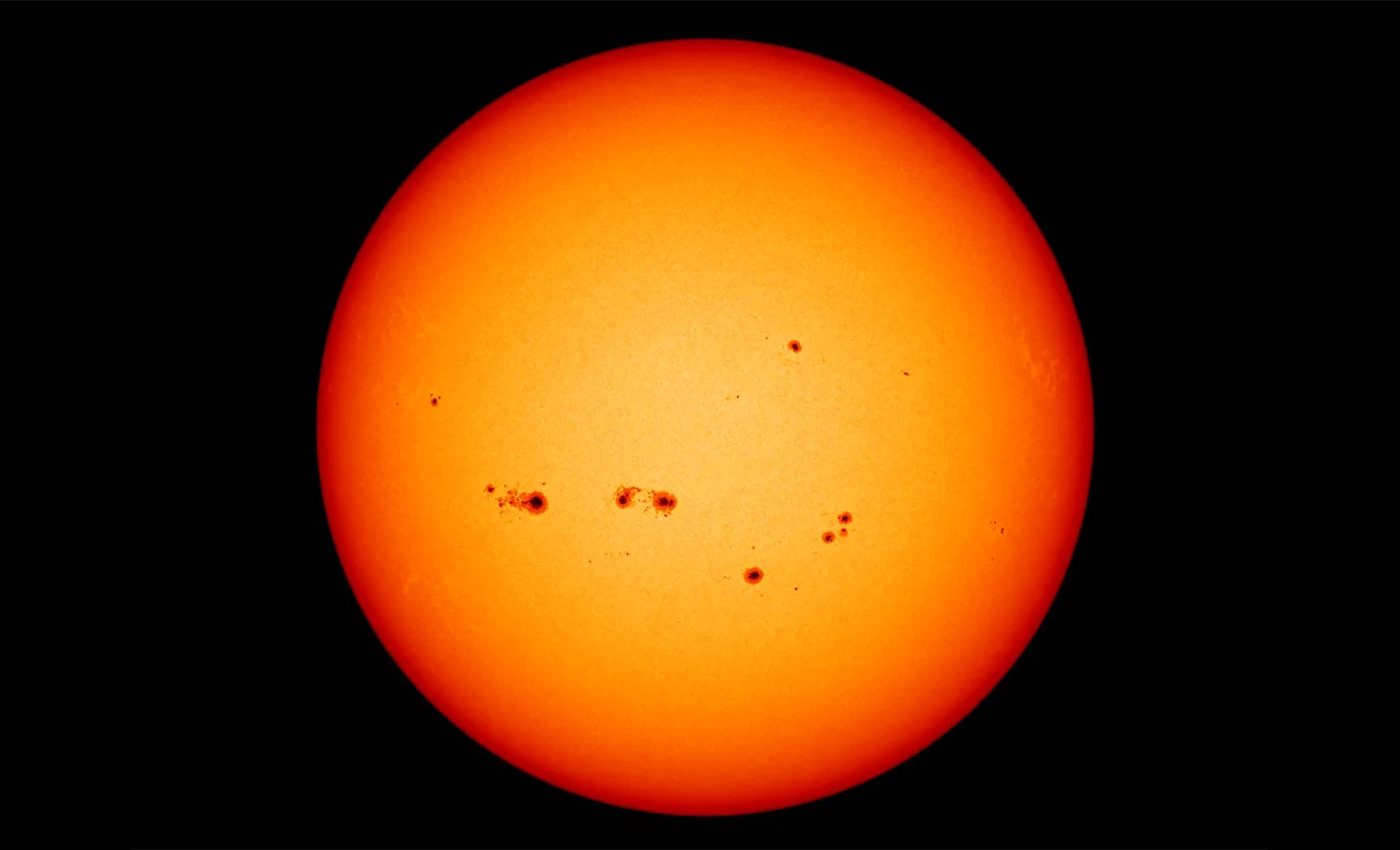
NOAA: The Sun now has highest number of sunspots seen since 2001
Looking at photos, sunspots might seem small or insignificant amidst the immense backdrop of the Sun. However, sunspot activity is anything but insignificant. They’ve had scientists scratching their heads for centuries and still do so today.
What implications does this peak in sunspot activity hold for our understanding of solar phenomena and their impact on Earth?
Setting new sunspot activity records
Solar Cycle 25 appears to have reached an impressive milestone, potentially achieving its highest sunspot number to date — at least 299.
Notably, the Space Weather Prediction Center (SWPC) provided a non-official estimated daily sunspot number of 337 for August 8th, a figure not seen since March 2001.
However, it is essential to note that the official sunspot number (SSN) is determined by the World Data Center – Sunspot Index and Long-Term Solar Observations (WDC-SILSO) and its Solar Influences Data Center (SIDC), located at the Royal Observatory in Belgium.
Their preliminary daily estimate for August 8th stands at 299, with the official count set to be released by September 1st.
Solar tattoos: Understanding sunspots
Picture this: a massive, swirling, glowing orb of gases with a surface that sizzles at about 5,500 degrees Celsius. Now, imagine parts of this surface cooling down to around 3,500 degrees Celsius, creating darker areas.
These are sunspots, the cooler, more mysterious siblings of the Sun’s otherwise scalding surface. They may look different, but they’re hotbeds for intense magnetic activity.
Think of them as places where the Sun’s magnetic field decides to play Twister, twisting and turning into knots and resulting in these darker spots.
What makes sunspots so fascinating is how they are born. At the heart of their formation lies the Sun’s complex, ever-changing magnetic field. Picture the Sun’s magnetic field as a giant spiderweb, invisible yet sprawling across its surface.
Occasionally, these lines get entangled, pushing concentrated magnetic fields to the surface. These intersections create cooler areas, our beloved sunspots, which may last anywhere from a few days to several weeks, depending on the magnetic hullabaloo going on there.
Sunspot activity and the Sun’s mood swings
Did you know the Sun has its own mood swings? It follows an approximately 11-year cycle, alternating between periods of high and low solar activities, known as solar maximum and minimum. Currently, the Sun is nearing the end of Solar Cycle 25, entering Solar Cycle 26.
During a solar maximum, sunspots have a field day, becoming more frequent and noticeable. But during a solar minimum, these spots become less prominent and play hide and seek.
Sunspots might look harmless at first glance, but they actually have a big impact on our planet.
How does that work? The intense magnetic activity associated with sunspots can spark solar storms, kind of like the Sun having a sneezing fit, releasing radiation and charged particles into space.
When these solar emissions hit Earth, they can mess with communication systems, disrupt power grids, and even pose risks to astronauts up in orbit.
By keeping an eye on sunspots, scientists can predict when solar activity will ramp up and take steps to protect our important infrastructure.
So, sunspots act like a natural early warning system, giving us valuable info about the Sun’s upcoming behavior.
Understanding this connection not only shows us the intricate relationship between our star and Earth but also makes us think about how solar activity impacts our everyday lives.
Future of sunspot study and Solar Cycle 25
As we advance technologically, our understanding of the Sun and its sunspots deepens in intriguing ways. Space observatories, such as NASA’s Solar Dynamics Observatory (SDO), offer remarkable insights into the Sun, giving scientists the ability to monitor sunspots with unprecedented detail.
In addition, researchers are crafting models to predict solar activity with greater precision, a development that aids in anticipating and managing the risks associated with solar storms.
While these phenomena may not be directly visible or felt in our daily lives, they are integral to our connection with the intricacies of solar dynamics.
Sunspots not only enrich our comprehension of the Sun but also provide insights into its fluctuations, informing us about potential solar storms.
So, the next time you encounter the term “sunspot,” consider this: it represents more than just a shadow on our star. It’s a vital link to our luminous powerhouse and a testament to the dynamic nature of the universe.
—–
Like what you read? Subscribe to our newsletter for engaging articles, exclusive content, and the latest updates.
Check us out on EarthSnap, a free app brought to you by Eric Ralls and Earth.com.
—–













